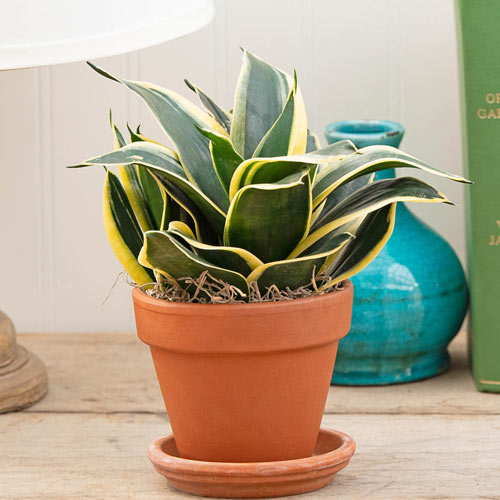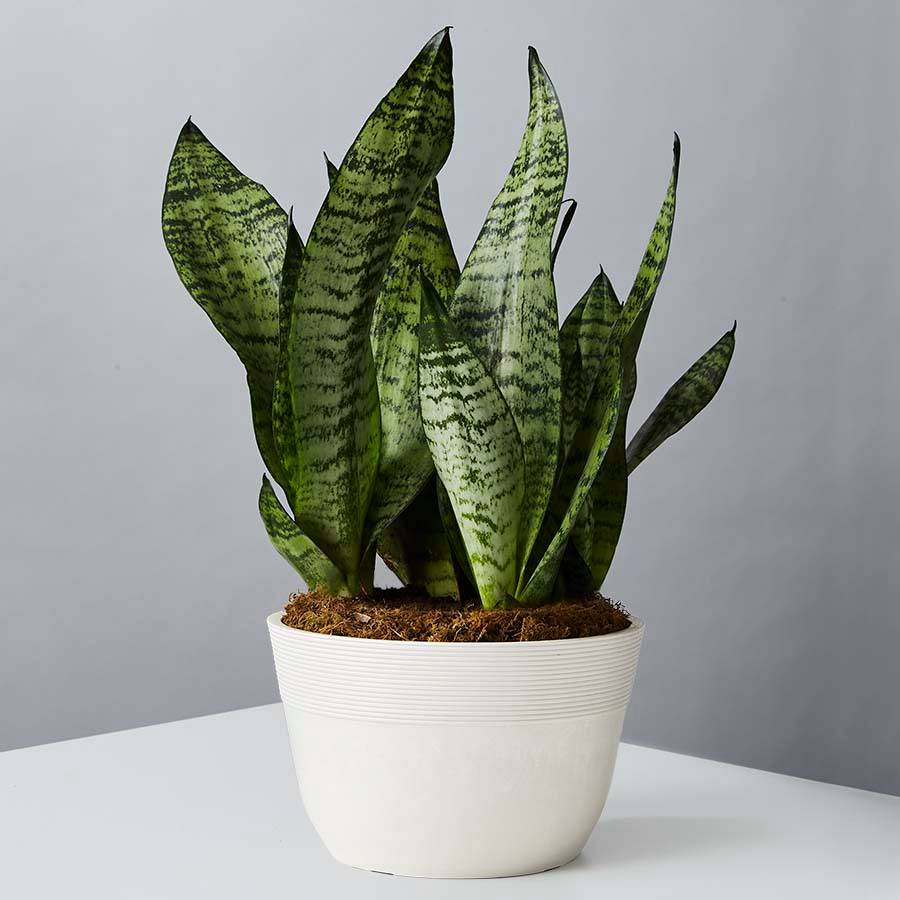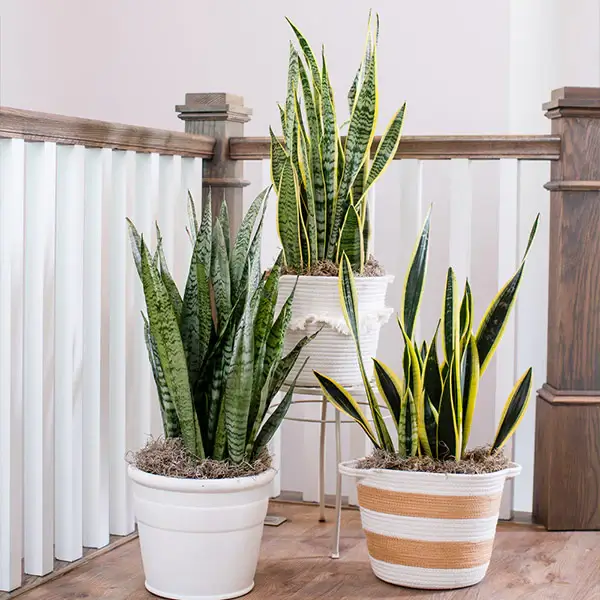A snake plant could be the answer to your search for a low-maintenance indoor plant with aesthetic appeal. Snake plants, or Sansevieria, are a favorite of green-thumbs due to their low upkeep requirements and eye-catching appearance.
These plants originated in West Africa, where they thrived in dry conditions for extended periods. Searches for “snake plant” on Google have increased by more than 550% over the previous five years, indicating a meteoric rise in the plant’s popularity.
All aspects of snake plant maintenance, from optimal conditions to typical issues and their solutions, are discussed in detail here. If you follow our recommendations, your snake plant will continue to grow and thrive for many years.

Light Requirements
Ideal Light Conditions for Snake Plants
The lighting conditions that snake plants can thrive in are rather diverse; nevertheless, they do best when exposed to bright, indirect light. They are also able to survive in conditions of low light, however this causes them to mature more slowly and can cause them to become lanky or spindly. As direct exposure to sunlight can cause the leaves of the snake plant to become charred, it is better to provide the plant with light that has been filtered or dispersed.
Related: How to Propagate Snake Plant
Instructions for Determining whether a Plant Is Getting Enough Light
If a snake plant is placed in an area that is well lit, its leaves will be a vivid shade of green and will be held in an erect position. The leaves may begin to droop or turn a more pale tint if the plant is not receiving an adequate amount of light. In settings with little light, the plant may generate fewer leaves overall and grow at a more snail-like pace.
Snake Plant Lighting Maintenance Advice
- It is crucial to understand your plant’s specific lighting demands in order to ensure its health and growth.
- Put your plant near a window that lets in lots of natural light but not direct sunlight if it wants bright, indirect light. Place your plant further away from the window or in an area where the light is filtered or dispersed if it requires little light.
- If your plant is in an area where the light isn’t consistent, you should rotate it every few weeks to ensure that all of its leaves get sunlight.
- Consider using fluorescent or LED grow lights to supplement the natural light your plant isn’t getting.
- Make sure the plant is getting enough light by checking on it frequently. Insufficient light can cause the leaves to droop or change colour.
Watering and Soil

Best Soil for Snake Plants
Snake plants thrive in loose, well-drained soil that does not retain water for an extended period of time. Sand, perlite, and peat moss or coconut coir are the three components that should be included in an appropriate potting mix for snake plants. To further improve the quality of the soil, you might also incorporate some compost or other organic material.
Snake Plant Watering Schedule
Snake plants can survive in dry conditions for long periods of time and do not need to be watered frequently. You should only water your snake plant if the top inch of soil is completely dry to the touch before you do so. Root rot, which can be lethal to the plant, can be caused by overwatering the plant. In most cases, it is preferable to keep your snake plant submerged rather than overwatering it.
Signs of Overwatering and Underwatering
The leaves of a snake plant that has received an excessive amount of water may become yellow or brown in colour, and they may also feel mushy and squishy to the touch. The leaves can wilt, get dry, and turn brown at the tips if there is insufficient water being provided to the plant.
How to Keep the Soil Moist at all Times
- Because of their propensity for root rot, snake plants should be watered by setting the pot in a saucer of water rather than watering the soil directly.
- Avoid letting the plant sit in water for more than a few hours, since this can cause the soil to get soggy and the roots to rot.
- While planting, make sure the soil can drain excess water by using a container with drainage holes.
- Keep an eye on soil moisture by sticking your finger down to the first knuckle at regular intervals. It is time to water if the soil is dry to the touch at this depth.
- During the colder months, when snake plants are often dormant, they may need less irrigation than usual.
Fertilizing

Importance of Fertilizing Snake Plants
Fertilizing snake plants is critical since doing so supplies the plant with the essential nutrients that are necessary for the plant’s proper development and growth. The plant’s overall health, as well as its resistance to diseases and pests, can be improved through fertilization, and the process can also improve the plant’s look.
Types of Fertilizer Ideal for Snake Plants
Fertilizing snake plants does not need to be done very frequently; nonetheless, when it is done, it is ideal to choose a fertilizer that is balanced and can be used for a variety of plants. You have the option of using either a slow-release granular fertilizer or a liquid fertilizer.
Select a fertilizer that has a nitrogen-to-phosphorus-to-potassium (NPK) ratio of 10-10-10 or 20-20-20 since these ratios produce a healthy combination of all three elements.
How Often to Fertilize
Snake plants do not require frequent fertilization. Throughout the growing season (spring and summer), you should fertilize your snake plant once every month. This should be done only while the plant is actively growing.
Throughout the fall and winter months, when the plant is in its dormant phase, the frequency of the application should be decreased to once every two to three months.
Tips for Proper Fertilization
- To prevent the plant from being over-fertilized, dilute the fertilizer as directed by the manufacturer.
- Spread the fertilizer around on damp soil so that the plant’s roots may easily take it up.
- Do not allow fertilizer to burn the leaves; instead, remove it by wiping them.
- When you’re done fertilizing, give the plant a gentle watering to encourage the nutrients to seep into the soil.
- See how the plant reacts to the fertilizer. Over-fertilization can cause yellowing or browning of the leaves. When this happens, you should hold off on fertilizing and allow the plant a chance to recuperate.
Common Problems and Solutions

Common Issues that Snake Plants Face
Snake plants require little attention most of the time, yet they are susceptible to a few different issues still. The following are some common problems that may arise with snake plants:
- As was previously indicated, root rot can result from overwatering, whereas leaf wilt and dryness can result from underwatering.
- Spider mites, mealybugs, and scale insects are common enemies of snake plants.
- Fungus problems, such as leaf spot and crown rot, have been observed in snake plants.
- If the soil doesn’t drain well or is excessively compacted, the roots may not be able to thrive.
How to Identify Problems
To identify problems with your snake plant, look for the following signs:
- Yellowing or browning leaves
- Wilted or drooping leaves
- Soft, mushy leaves
- Signs of pests, such as webs, scales, or mealybugs
- Discolored spots on leaves
- Stunted growth
Solutions to Common Problems
- To avoid having the soil become soggy, adjust your watering plan accordingly. Make sure there are holes in the bottom of the pot so water can drain out.
- If you want to get rid of insects, you can use neem oil or an insecticidal soap. A moist towel can also be used to rid the leaves of bugs.
- It is necessary to remove diseased parts of the plant and increase air circulation in order to stop the spread of the ailment. Do not overwater, and pick up dead leaves and other debris from the ground.
- Move your snake plant to a pot with better drainage, or amend the soil with perlite or sand.
- Transplant your plant somewhere less sunny, or at least hang a sheer curtain to diffuse the light.
- If your plant is struggling to thrive in its current environment, try relocating it or adding grow lights.







